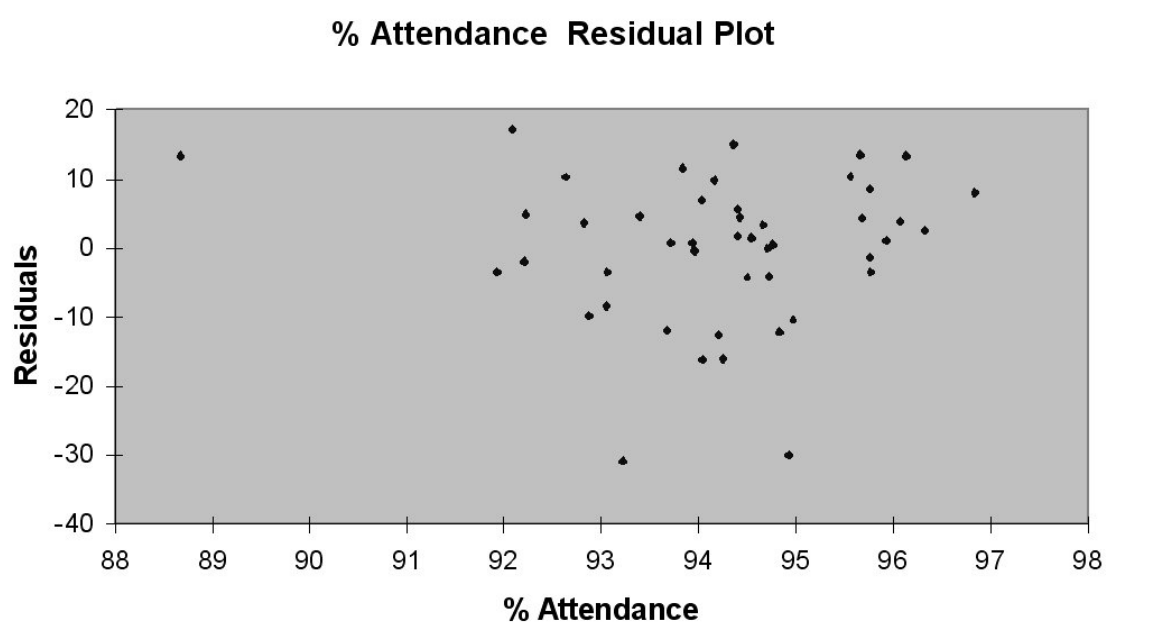TABLE 15- 8
The superintendent of a school district wanted to predict the percentage of students passing a sixth- grade proficiency test. She obtained the data on percentage of students passing the proficiency test (% Passing), daily average of the percentage of students attending class (% Attendance), average teacher salary in dollars (Salaries), and instructional spending per pupil in dollars (Spending) of 47 schools in the state.
Let Y = % Passing as the dependent variable, X1 = % Attendance, X2 = Salaries and X3 = Spending.
The coefficient of multiple determination (R 2 j) of each of the 3 predictors with all the other remaining predictors are,
respectively, 0.0338, 0.4669, and 0.4743.
The output from the best- subset regressions is given below:
Following is the residual plot for % Attendance:
Following is the output of several multiple regression models:
-Referring to Table 15-8, the residual plot suggests that a nonlinear model on % attendance may be a better model.
Definitions:
Product Development
A marketing strategy that involves creating new goods and services for existing markets.
Profitable
Describes a business or activity that generates more revenue than the expenses incurred, resulting in financial gain.
Open Innovation
A way of generating new-product ideas by gathering both external ideas and internal ideas.
Disruptive Technology
Innovations that significantly alter the way businesses or industries operate, often displacing older technologies.
Q1: A firm wishing to maximize profits will
Q9: Referring to Table 17-5, what is the
Q44: Referring to Table 16-6, exponential smoothing with
Q45: If a group of independent variables are
Q52: CPL >1 implies that the process mean
Q73: Referring to Table 17-2, what is the
Q76: The Variance Inflationary Factor (VIF) measures the<br>A)
Q86: Referring to Table 18-5, the best estimate
Q115: Referring to Table 14-17, there is not
Q122: The difference between expected payoff under certainty